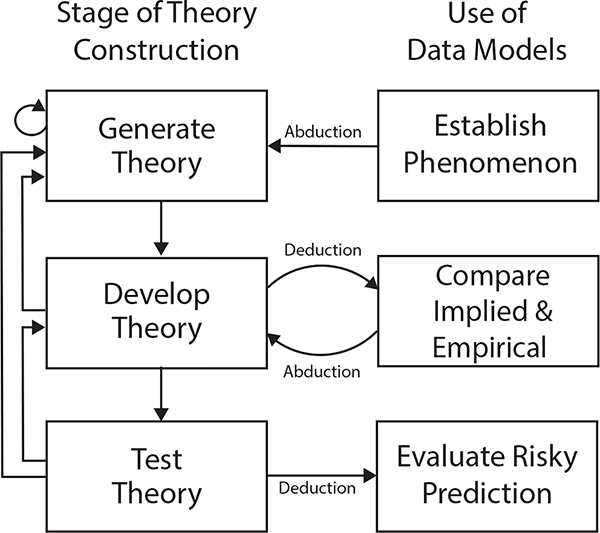Figure 8:
Flowchart depicting the process of developing a formal theory with the Abductive Formal Theory Construction framework. In the theory generation stage we first establish the phenomenon (Section 4.1.1) and then generate an initial verbal theory (Section 4.1.2) which is subsequently formalized (Section 4.1.3). In the second stage (Section 4.2) the theory is developed by testing whether it is consistent with existing empirical findings that are not part of the core phenomenon. If the formal theory is not consistent with some findings, it is adapted accordingly. If these adaptations lead to a “degenerative” theory (Meehl, 1990) we return to the first stage; otherwise we continue to the final stage, in which we test the formal theory using risky predictions (Section 4.3). If many tests are successful, we tentatively accept the theory. If not, the theory must either be adapted (stage two) or a new theory must be generated (stage one).

